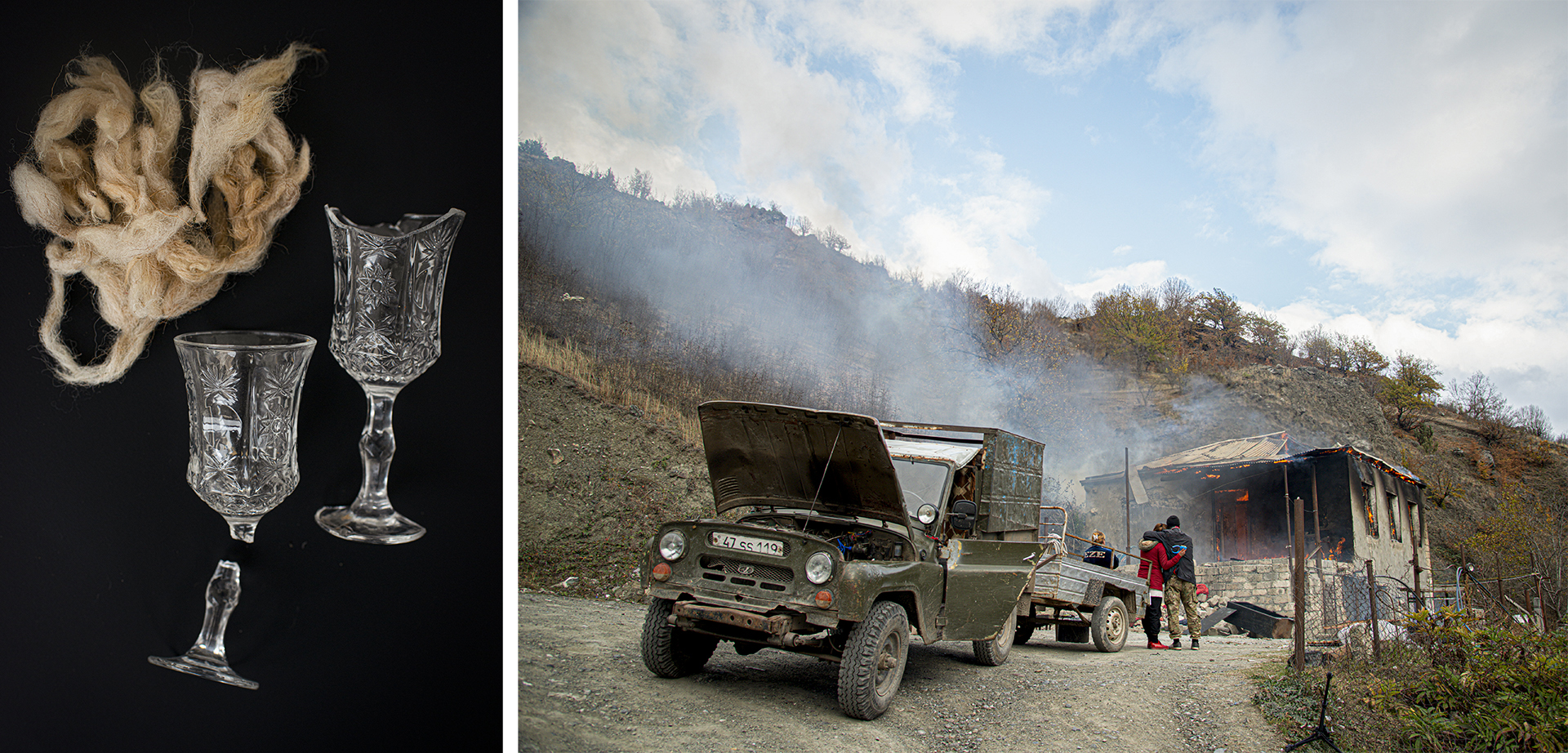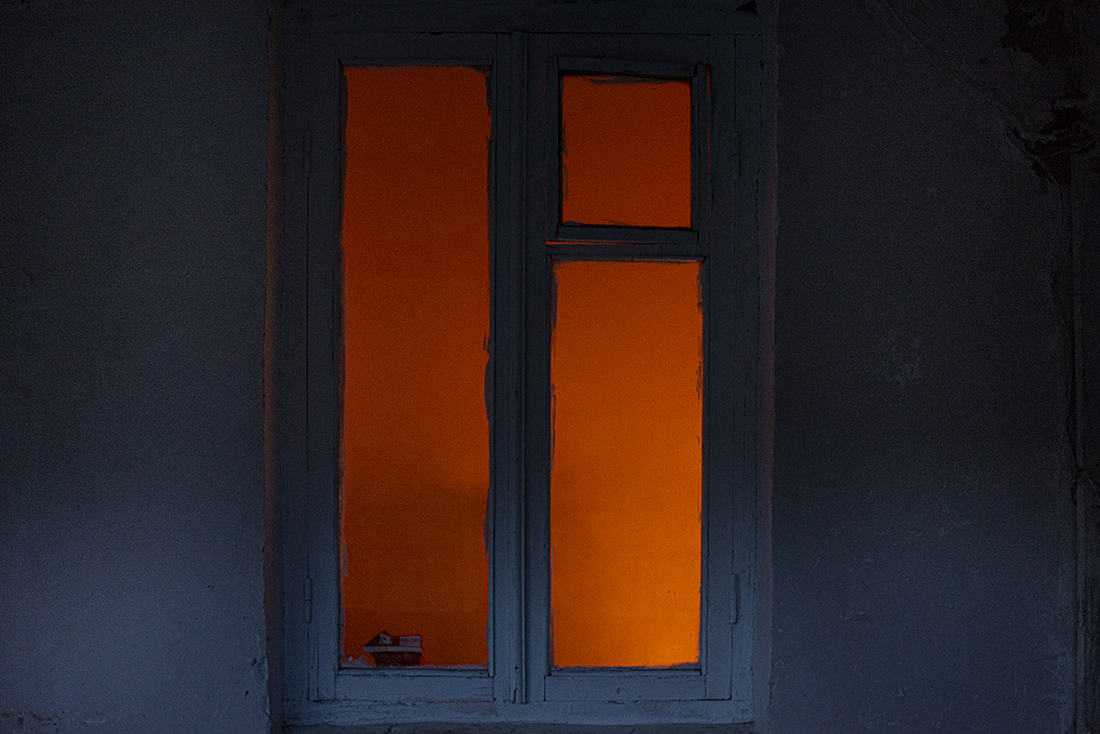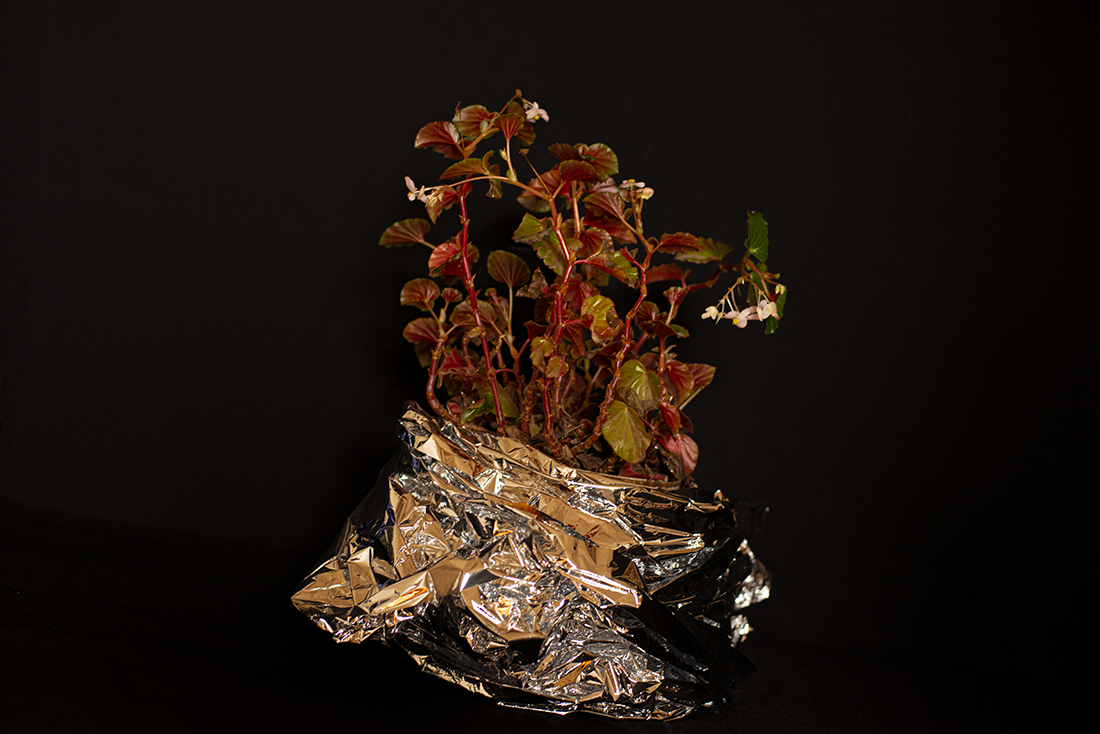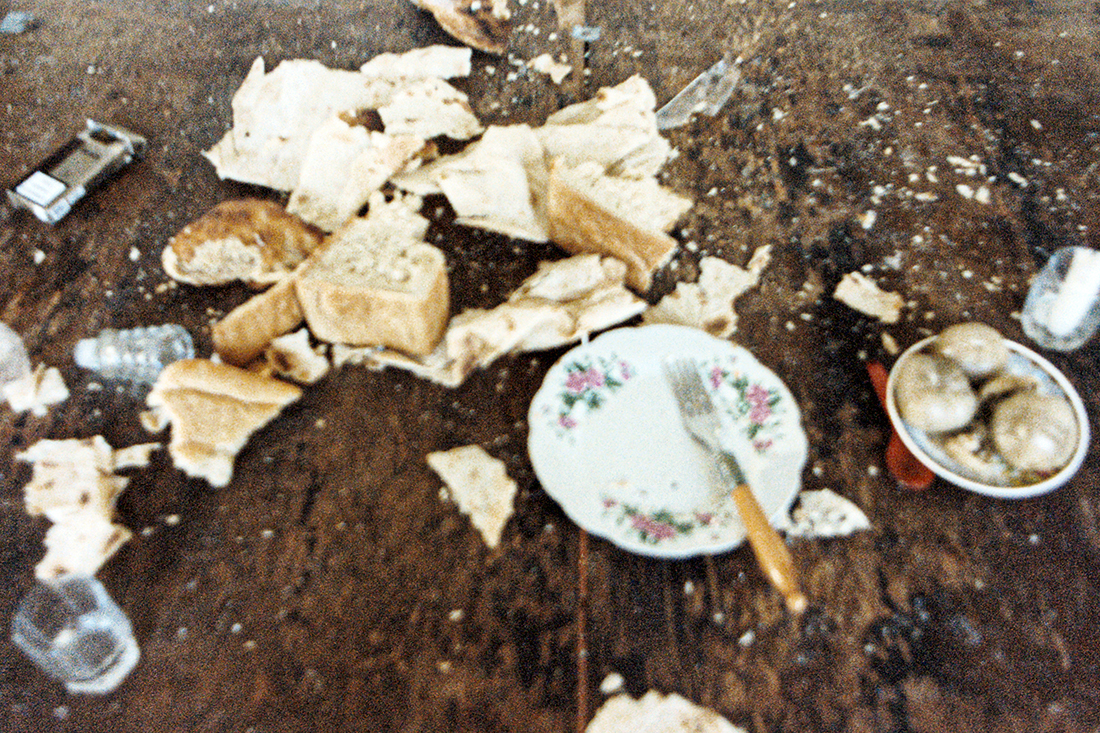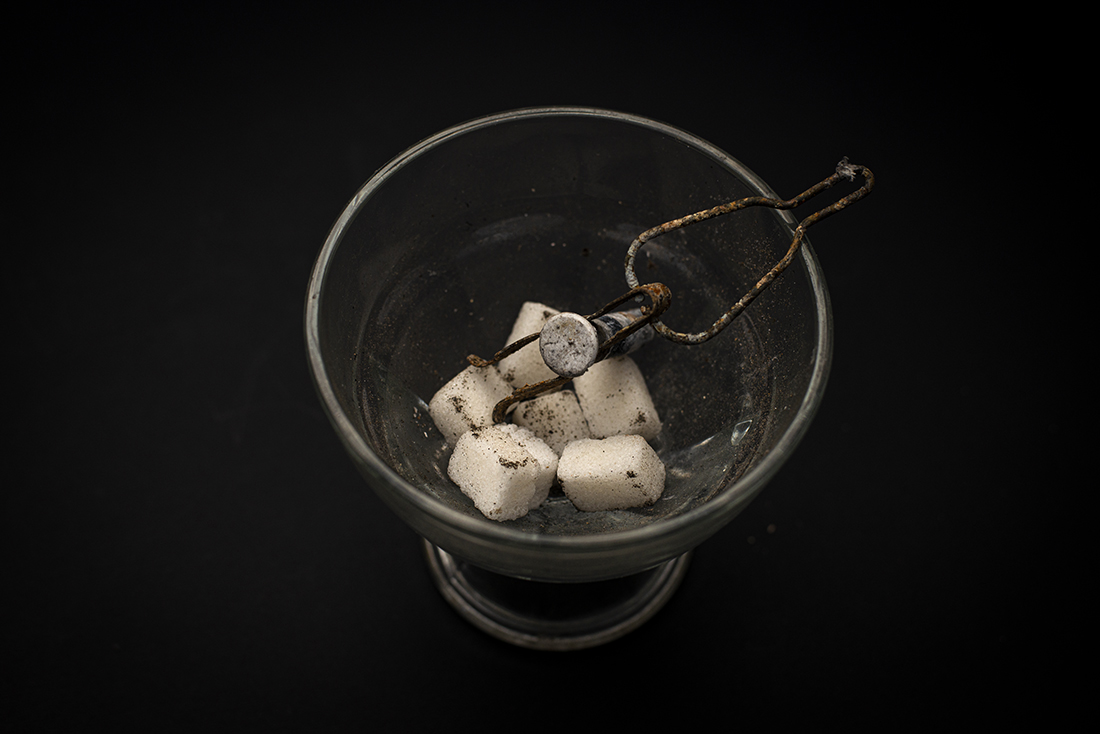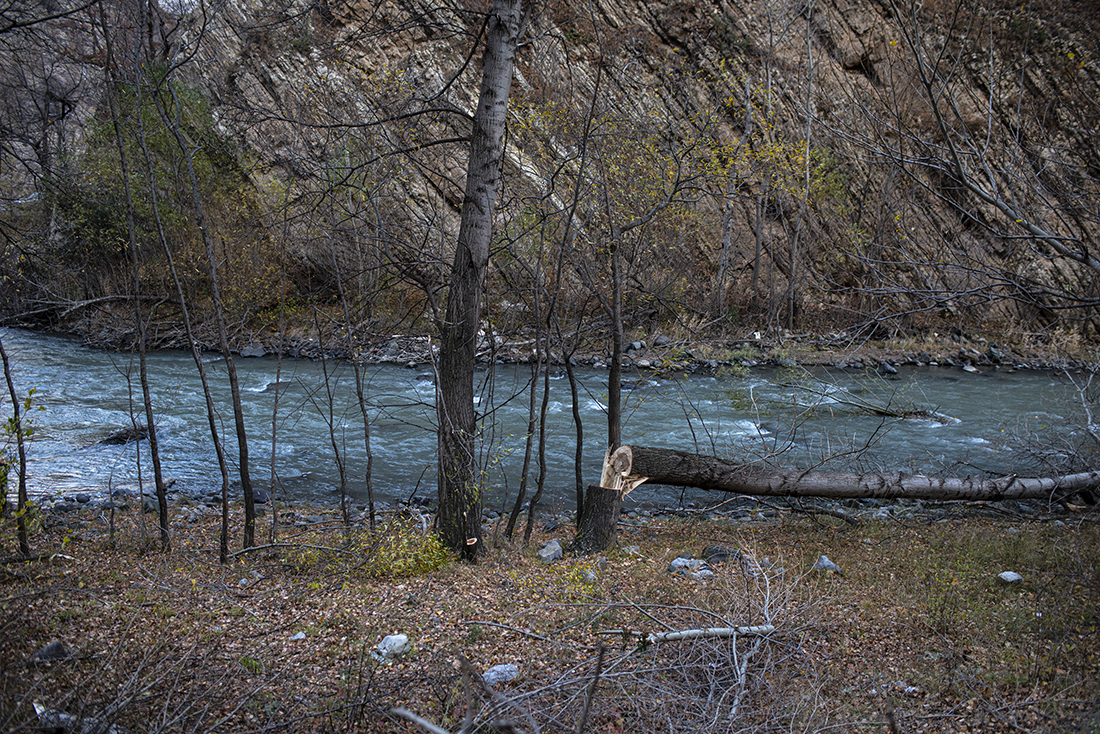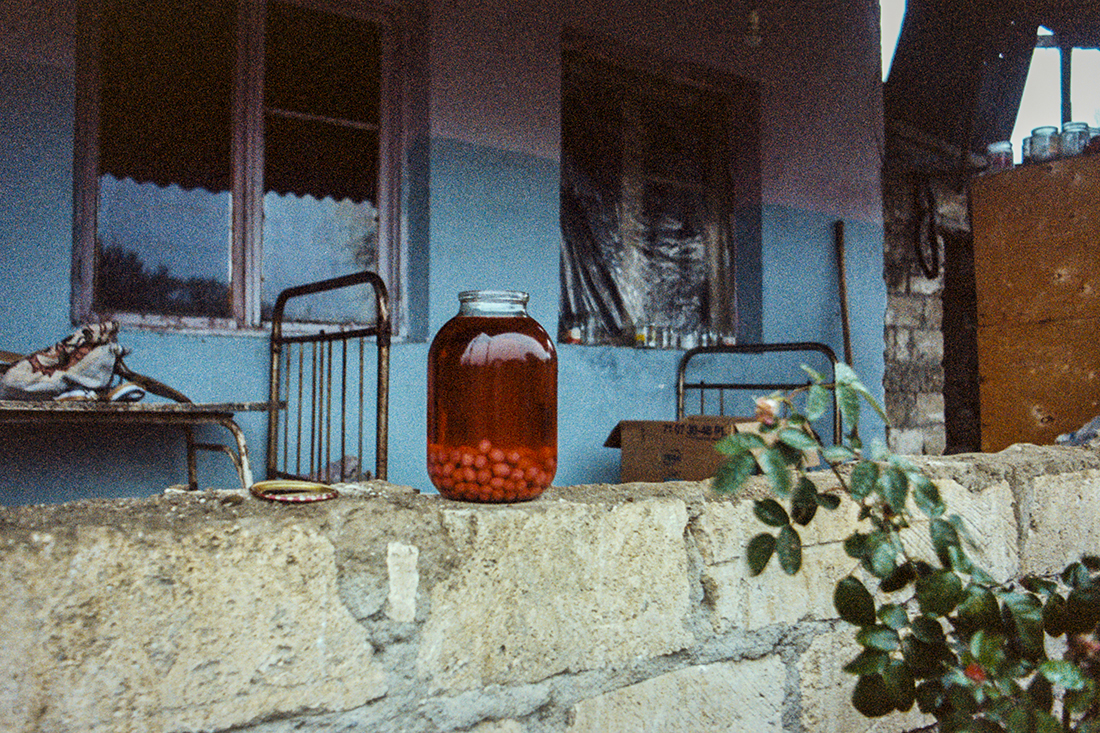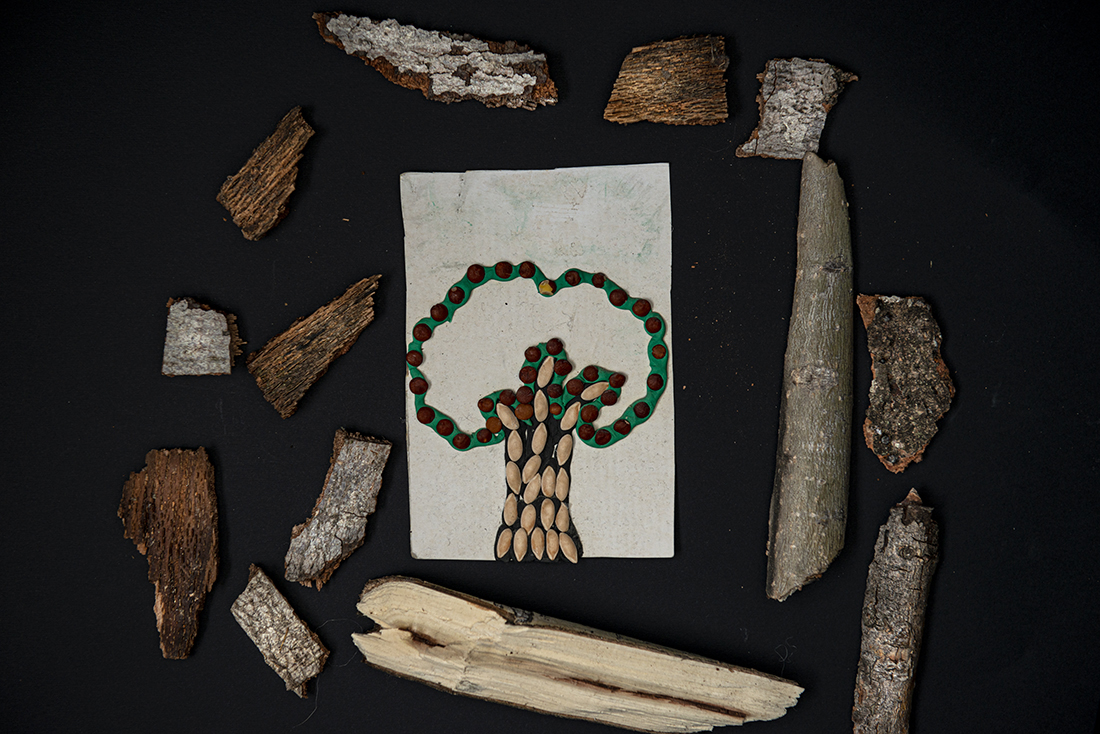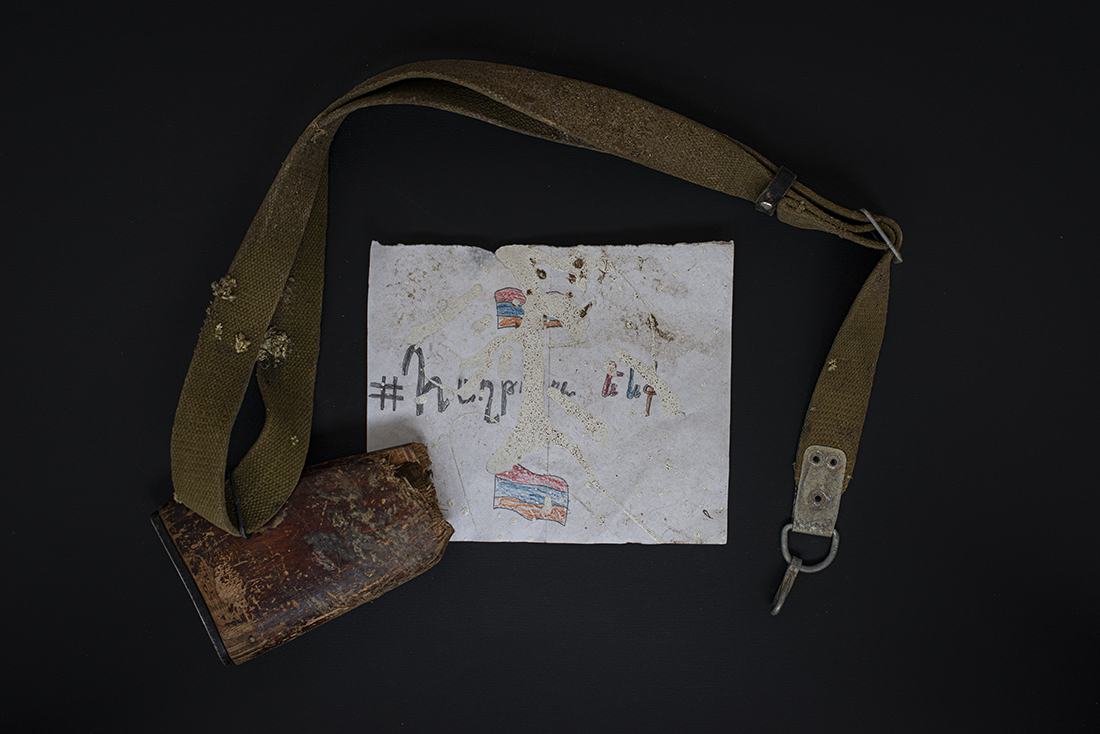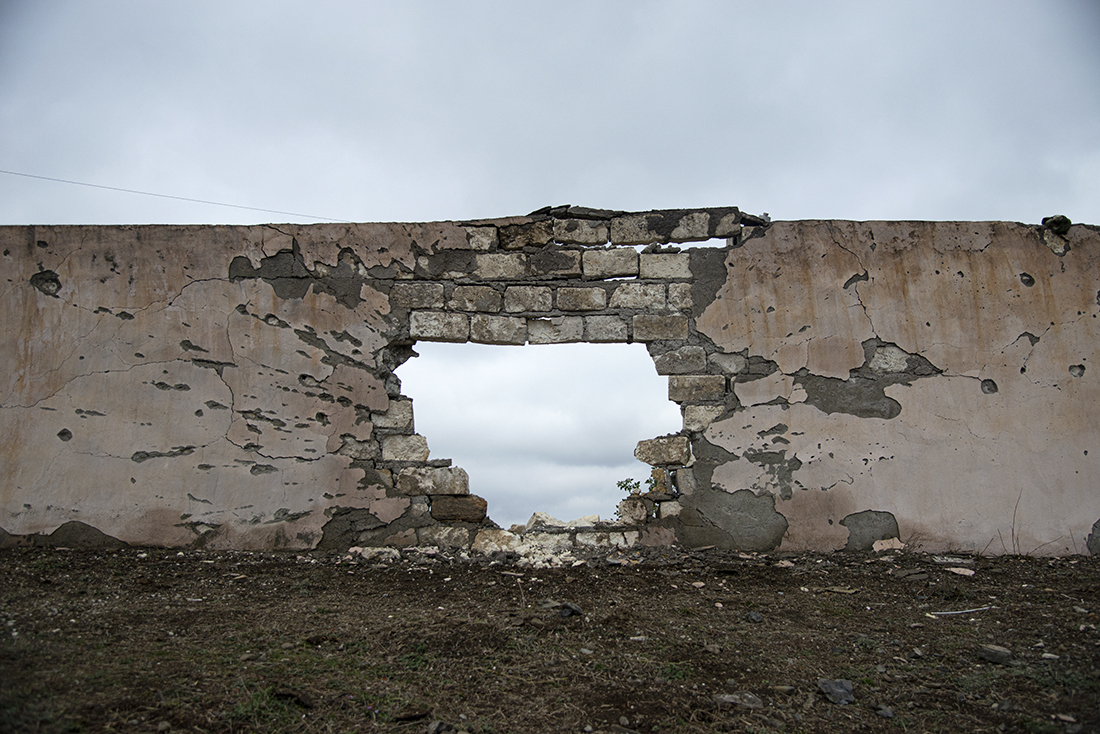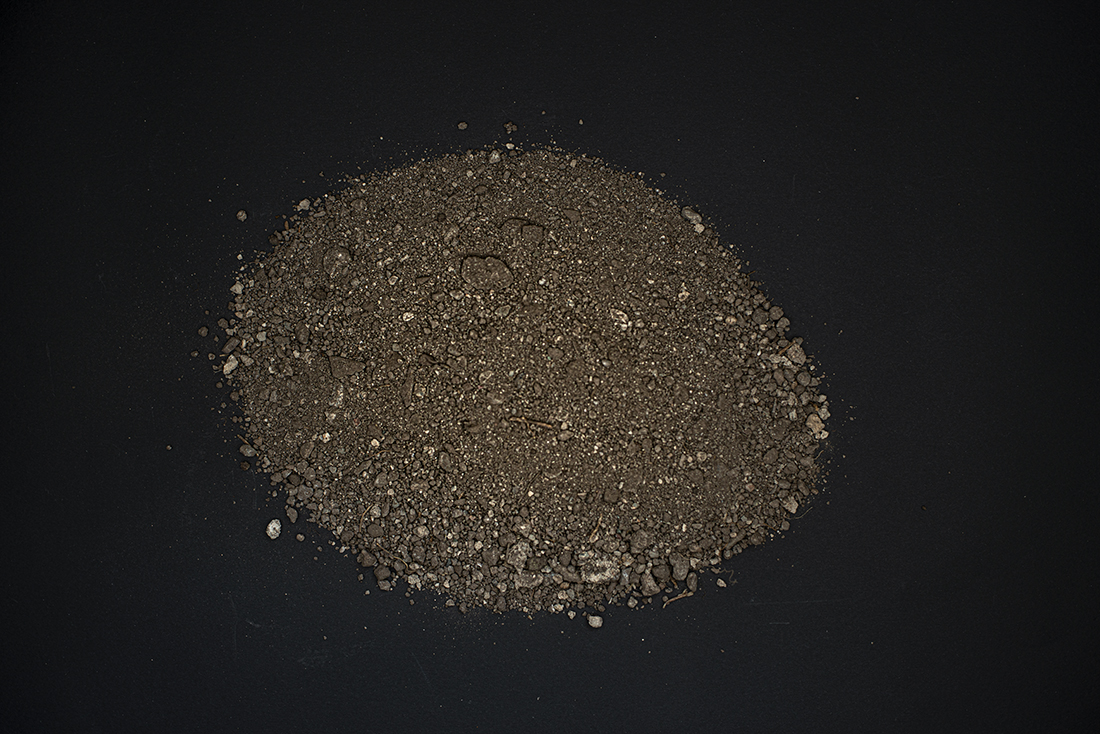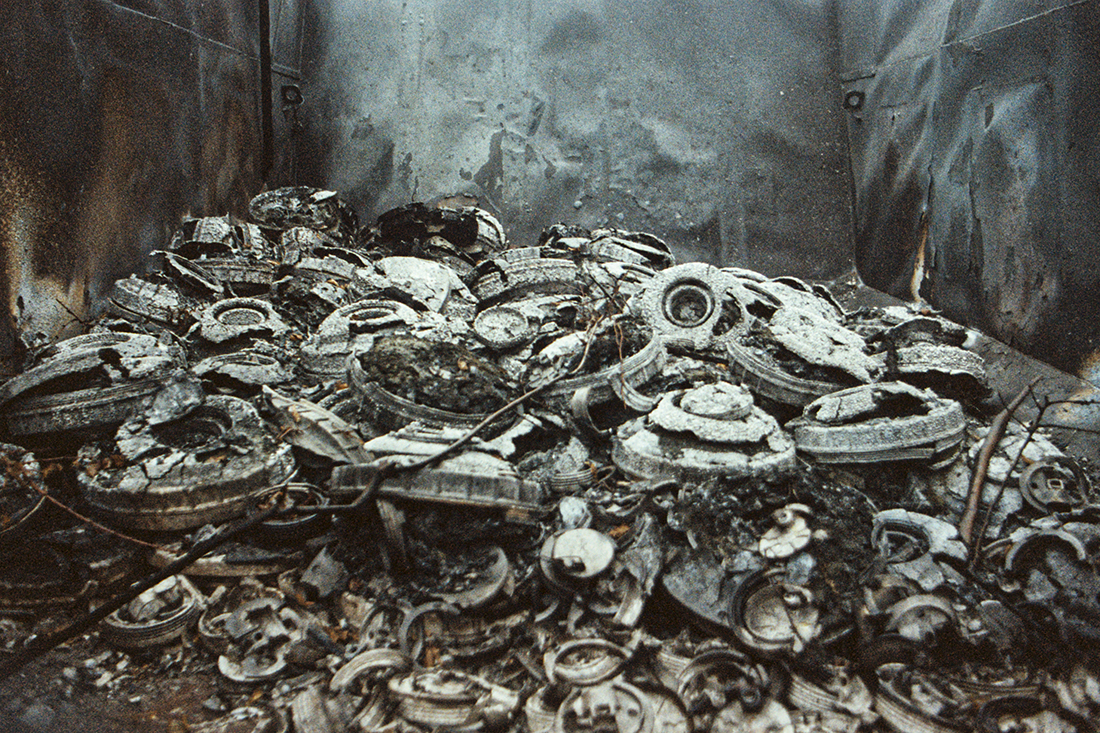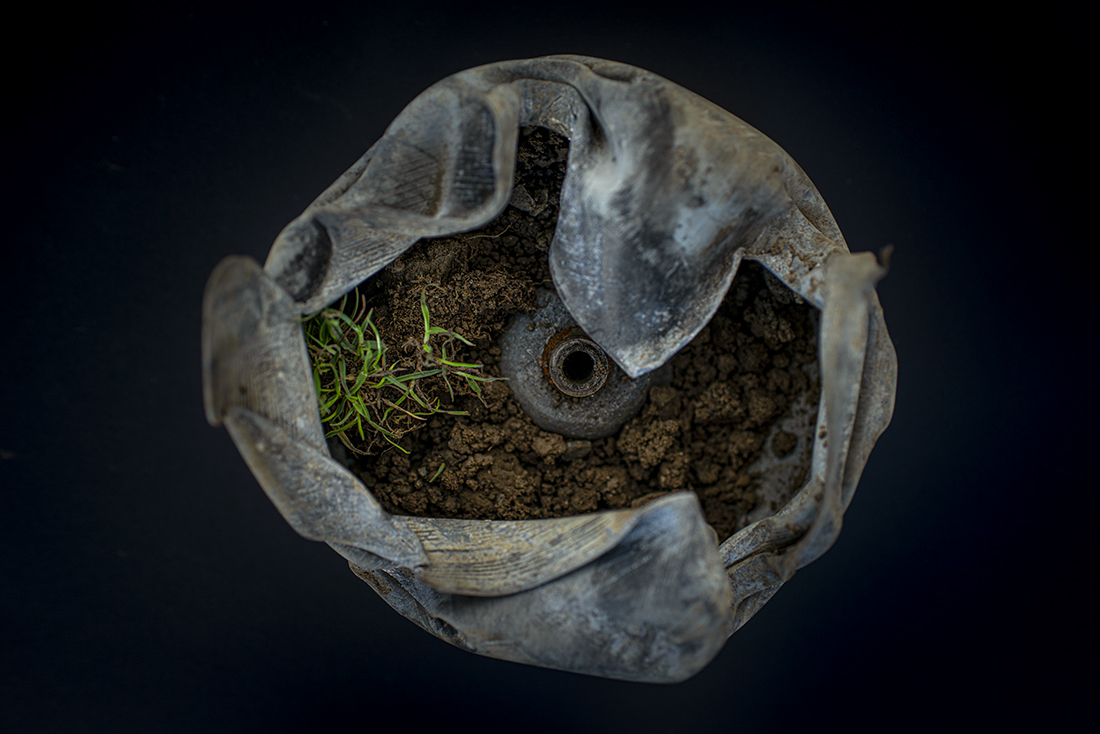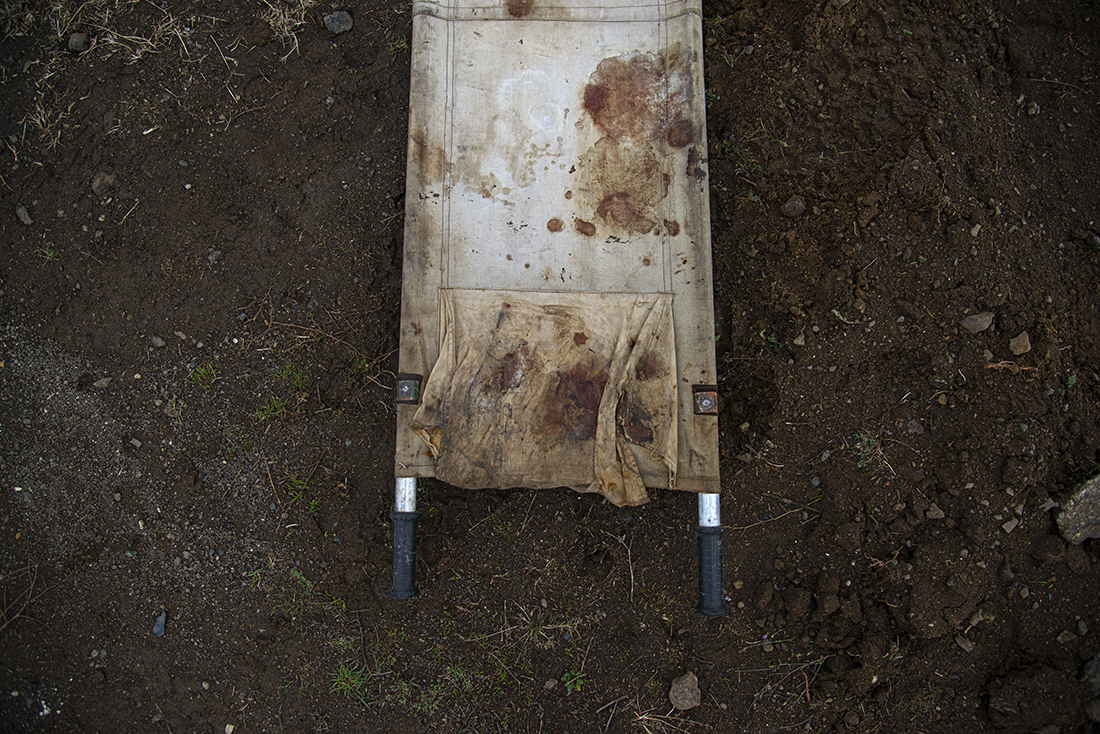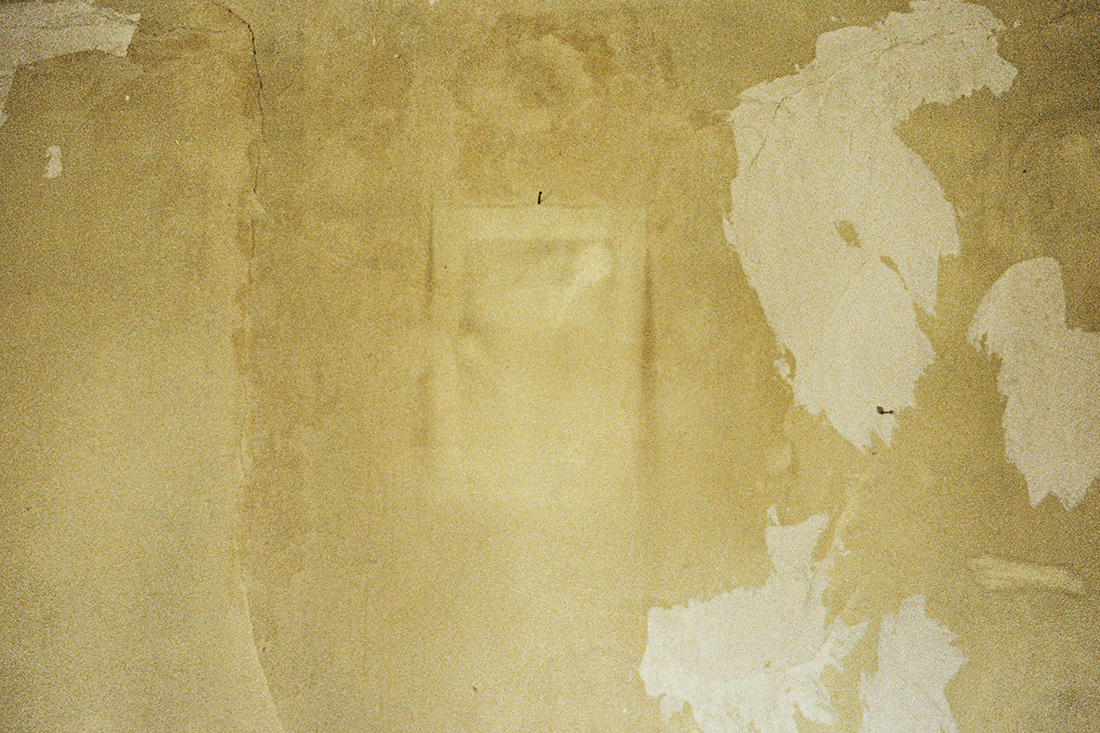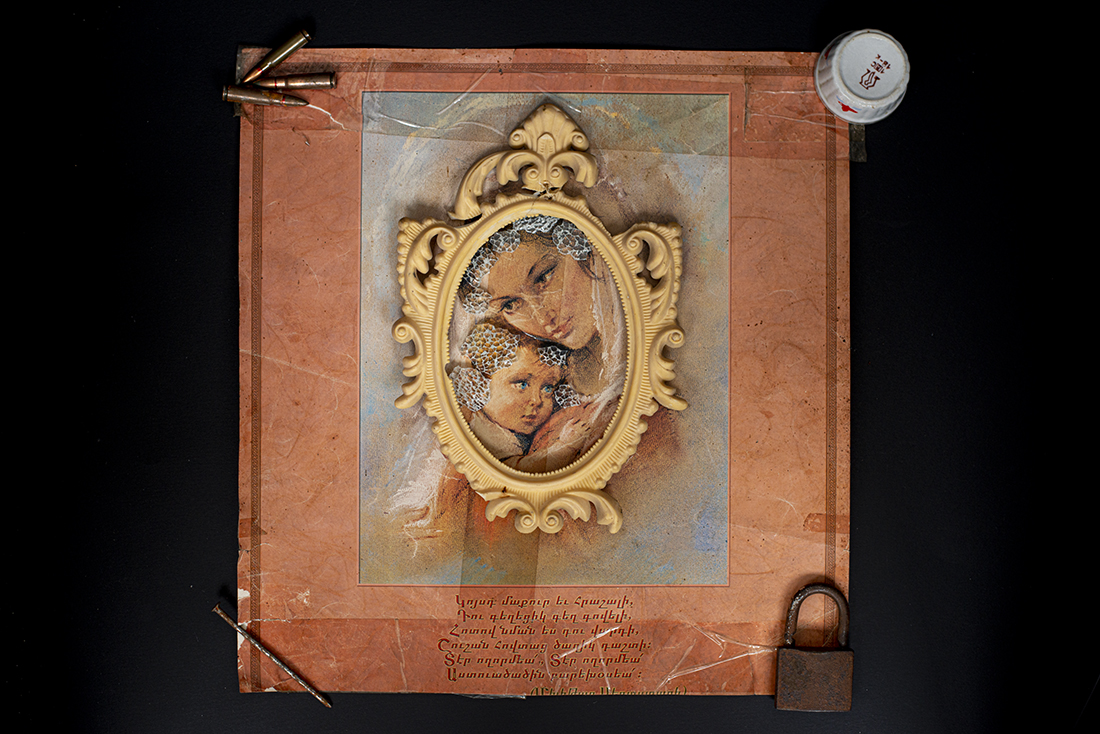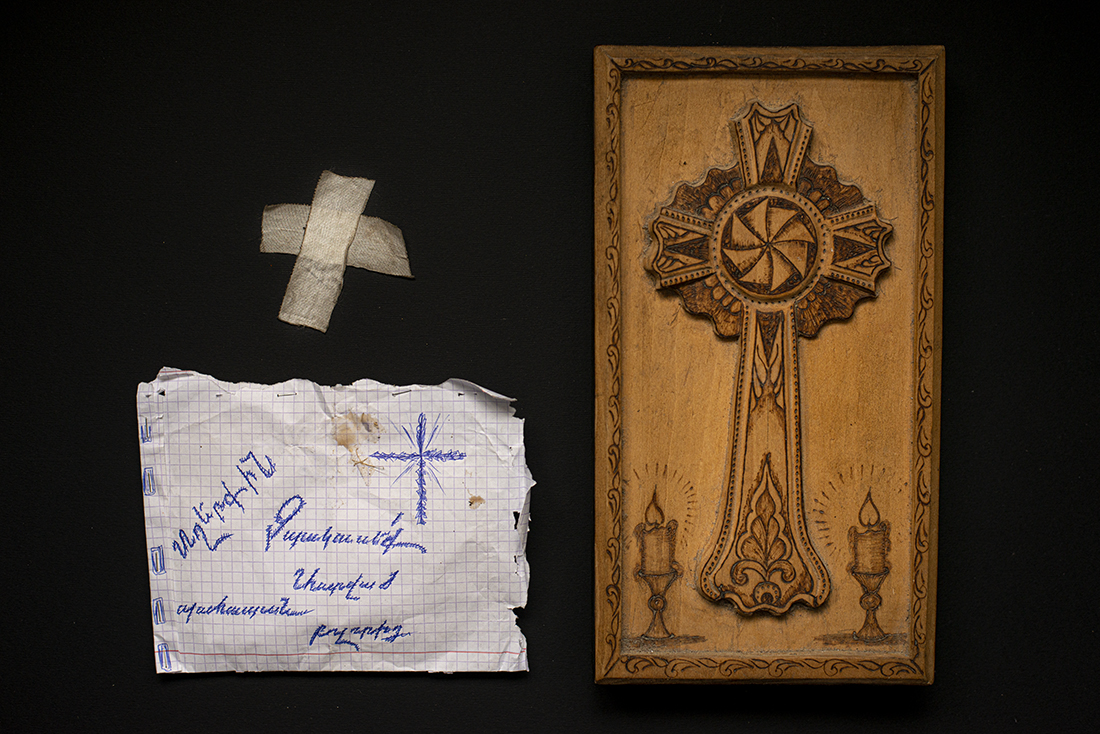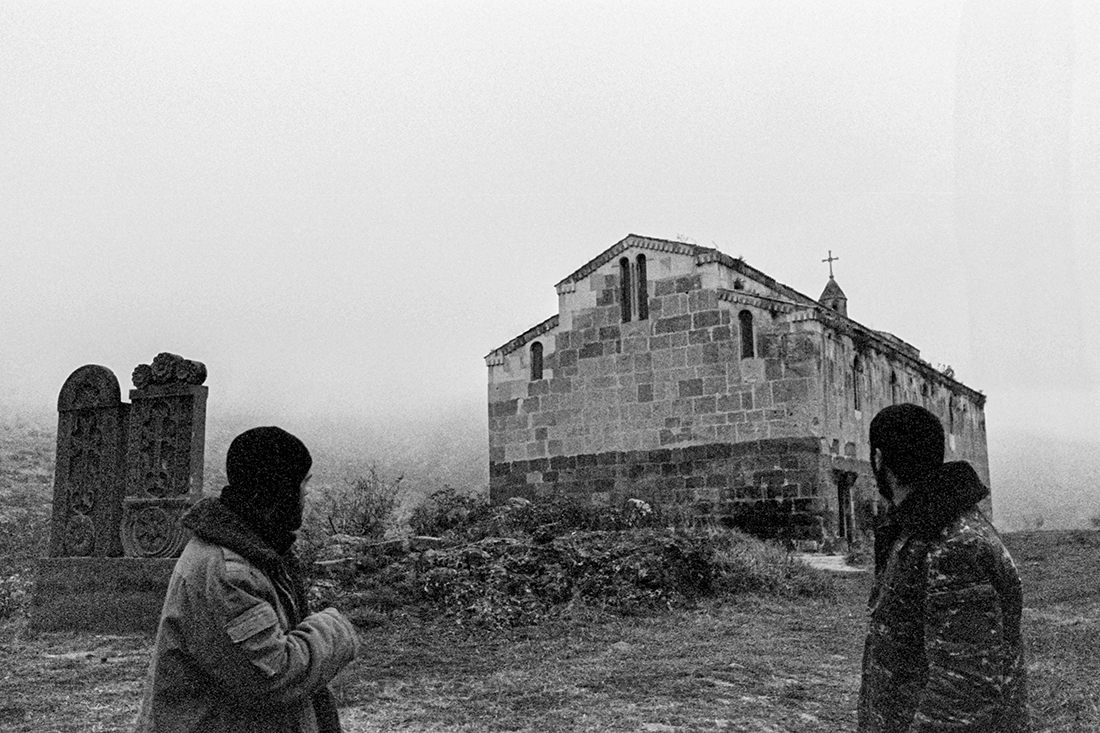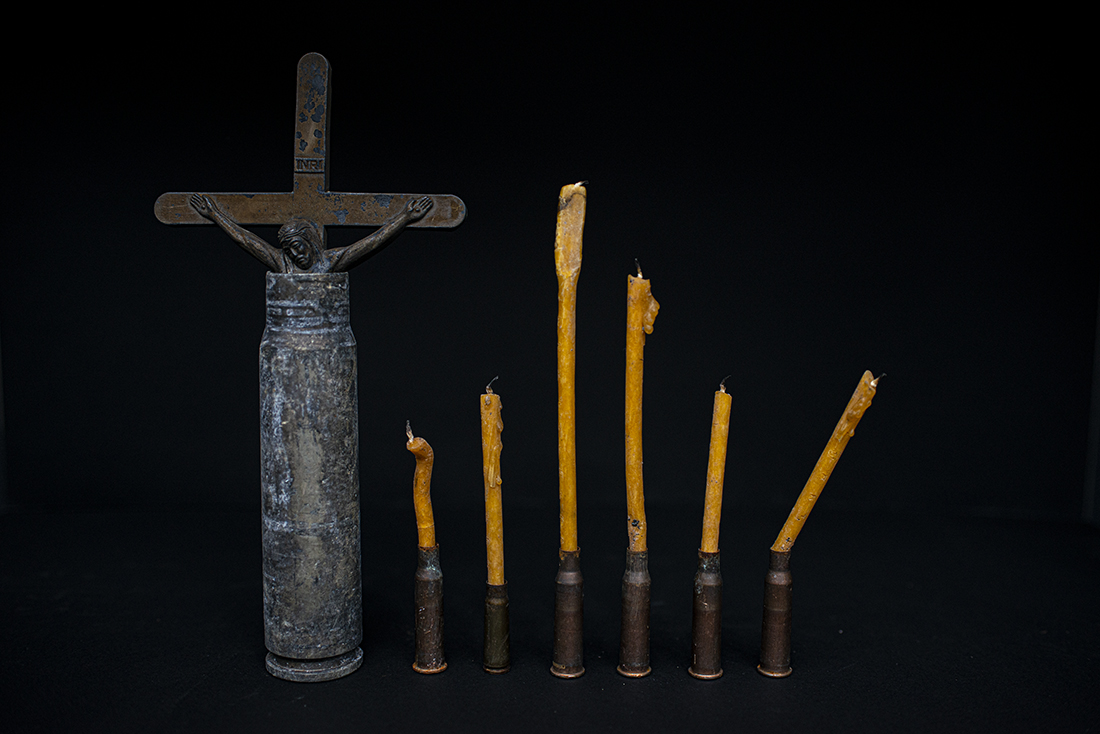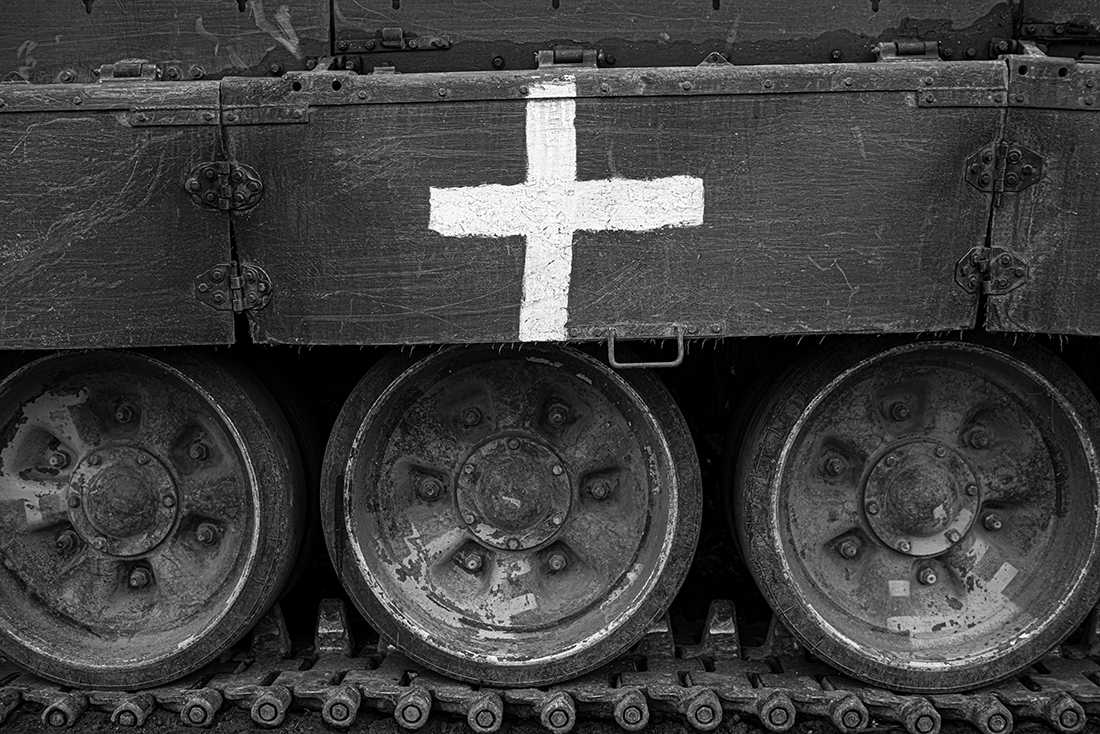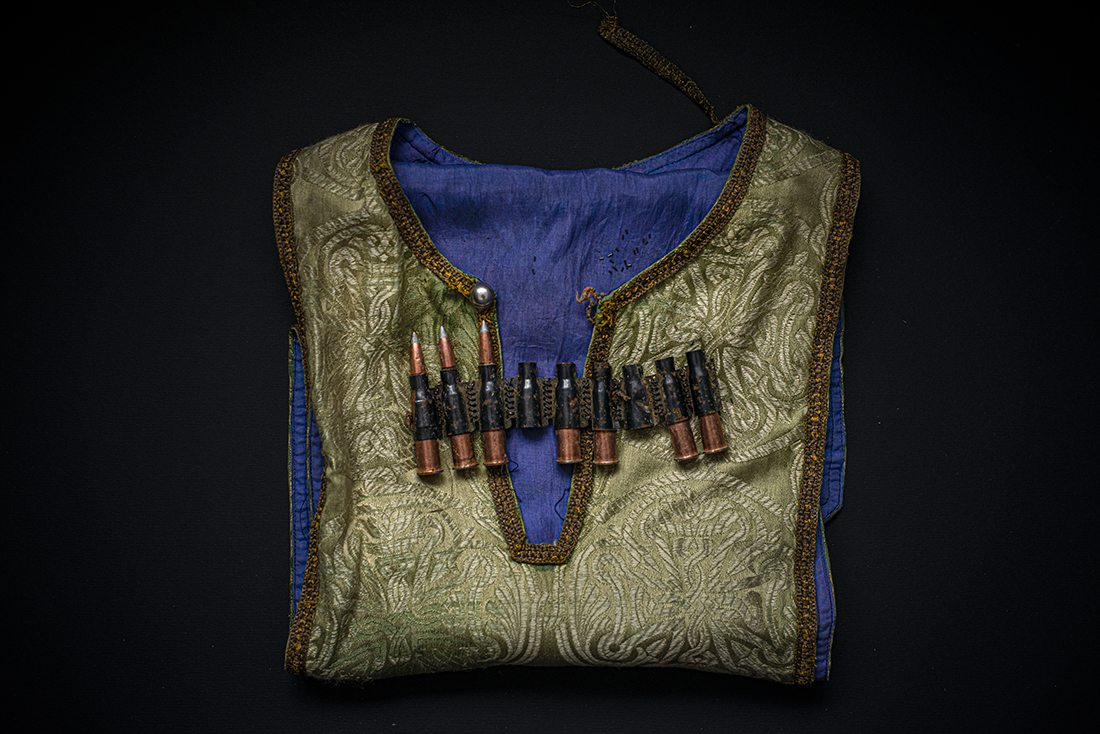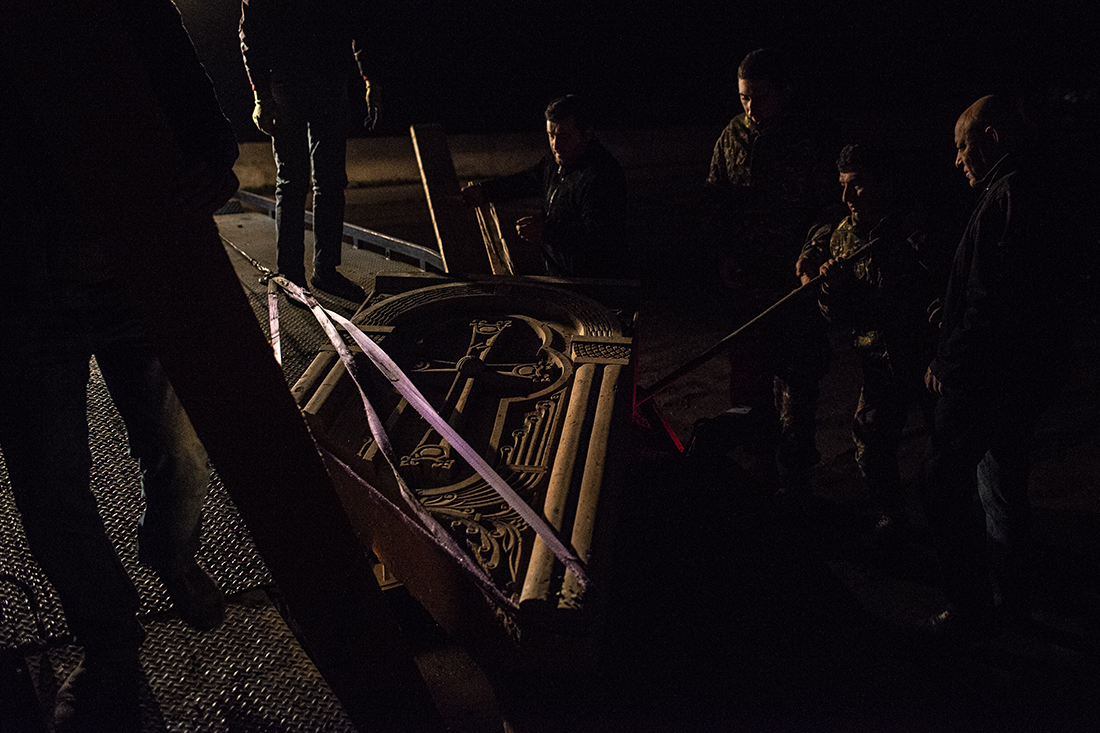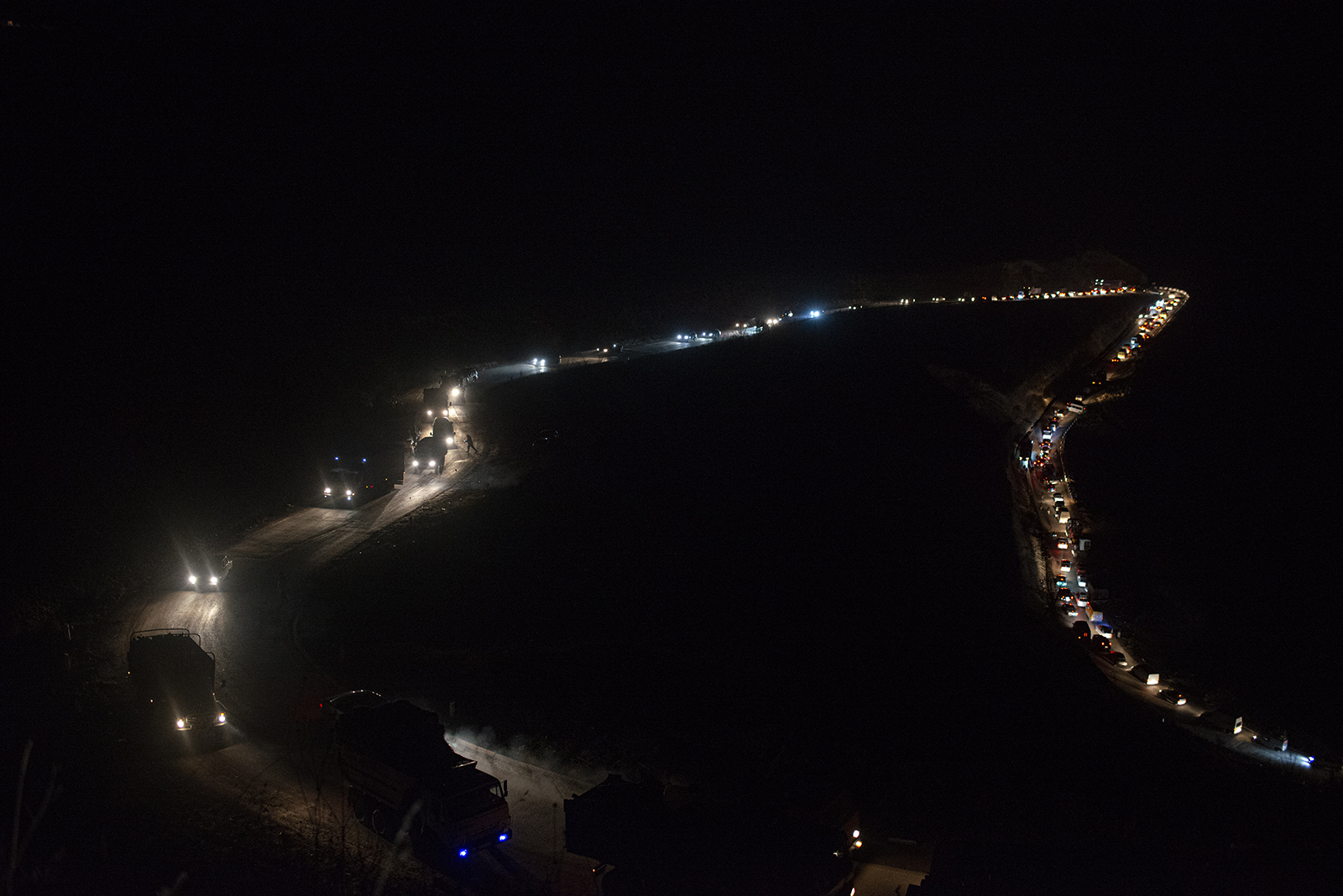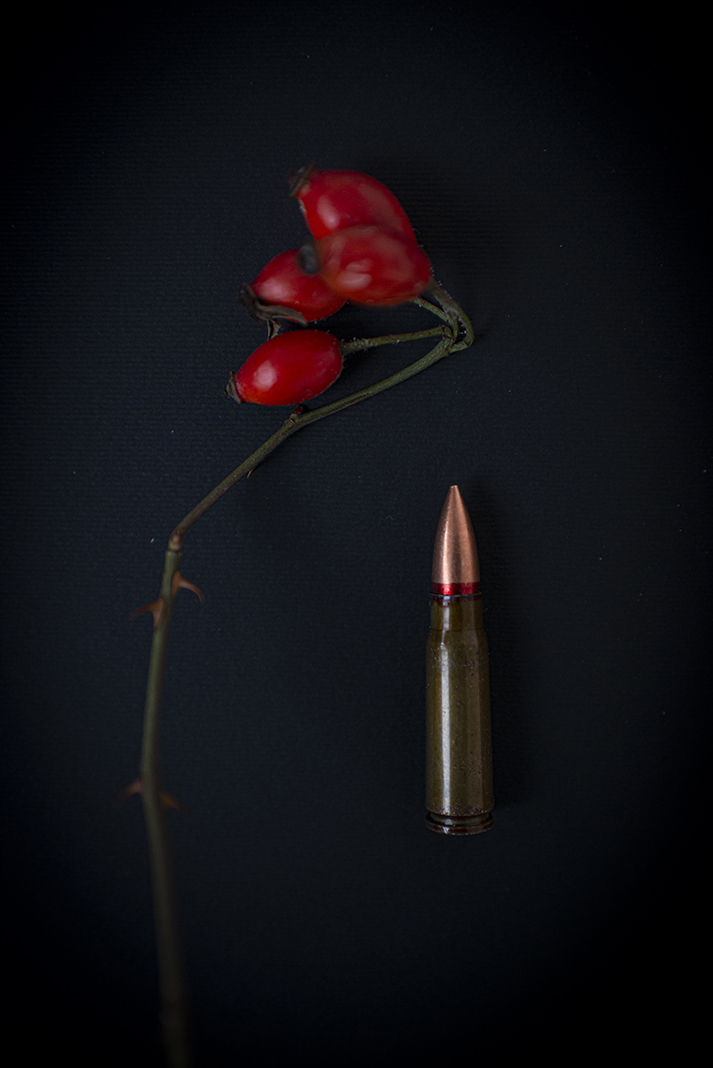I left the first burning house with two festive glasses in my hands and anguish in my soul.
The man – who set his house on fire in Charektar village, Shahumyan district on November 13 – unexpectedly started to look for the foot of the festive glass and, by handing the broken part in to me, he said, “If you need them, take it, daughter. We don’t need them any more…”
If this had not happened first, I would perhaps take other route and other images…
In just a few hours, everyone had to leave the place where they had lived, and perhaps congratulated each other with these very glasses on their birthdays and the New Year’s Eve, drinking to a simple life, to the year that passed, and the days yet to come.
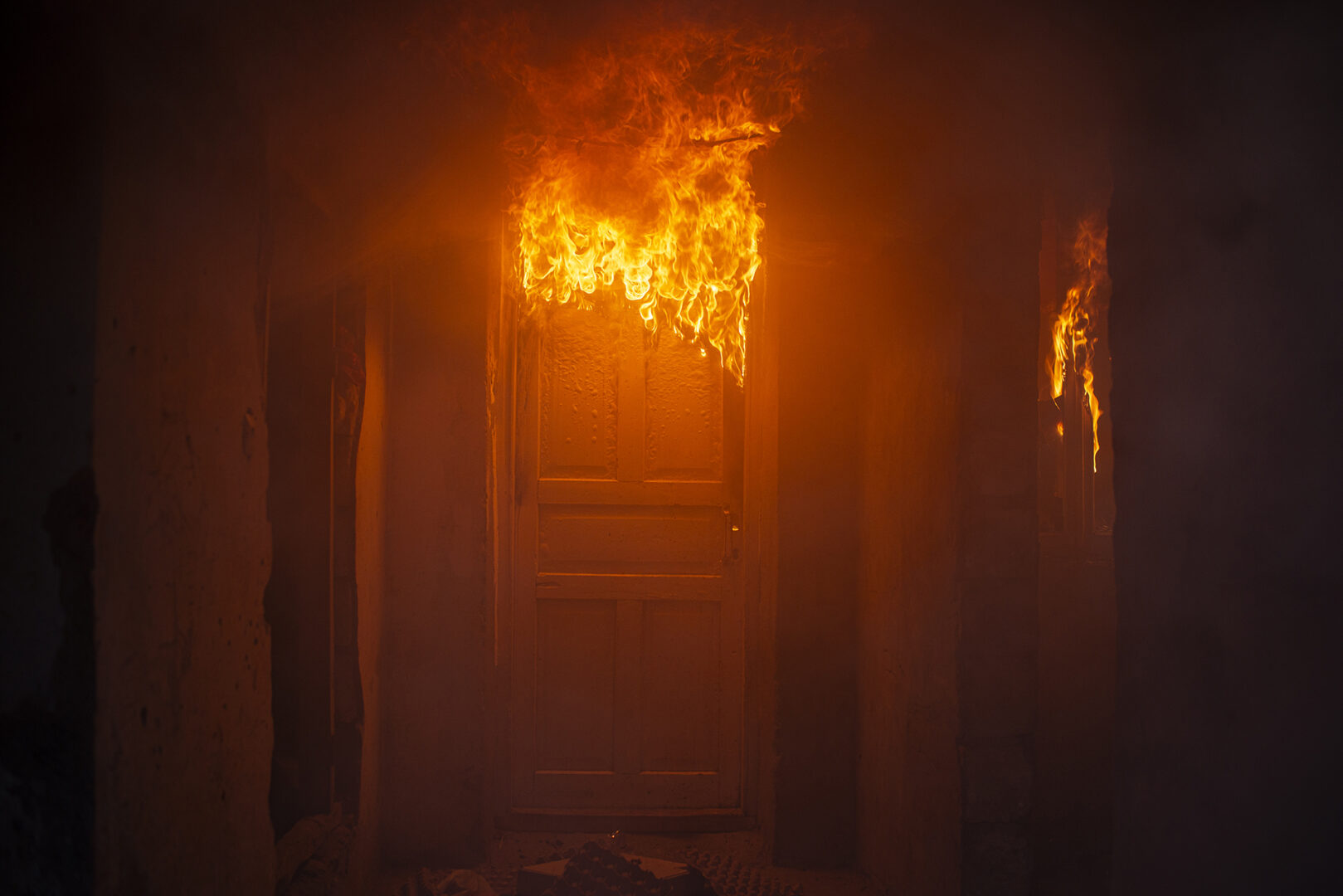
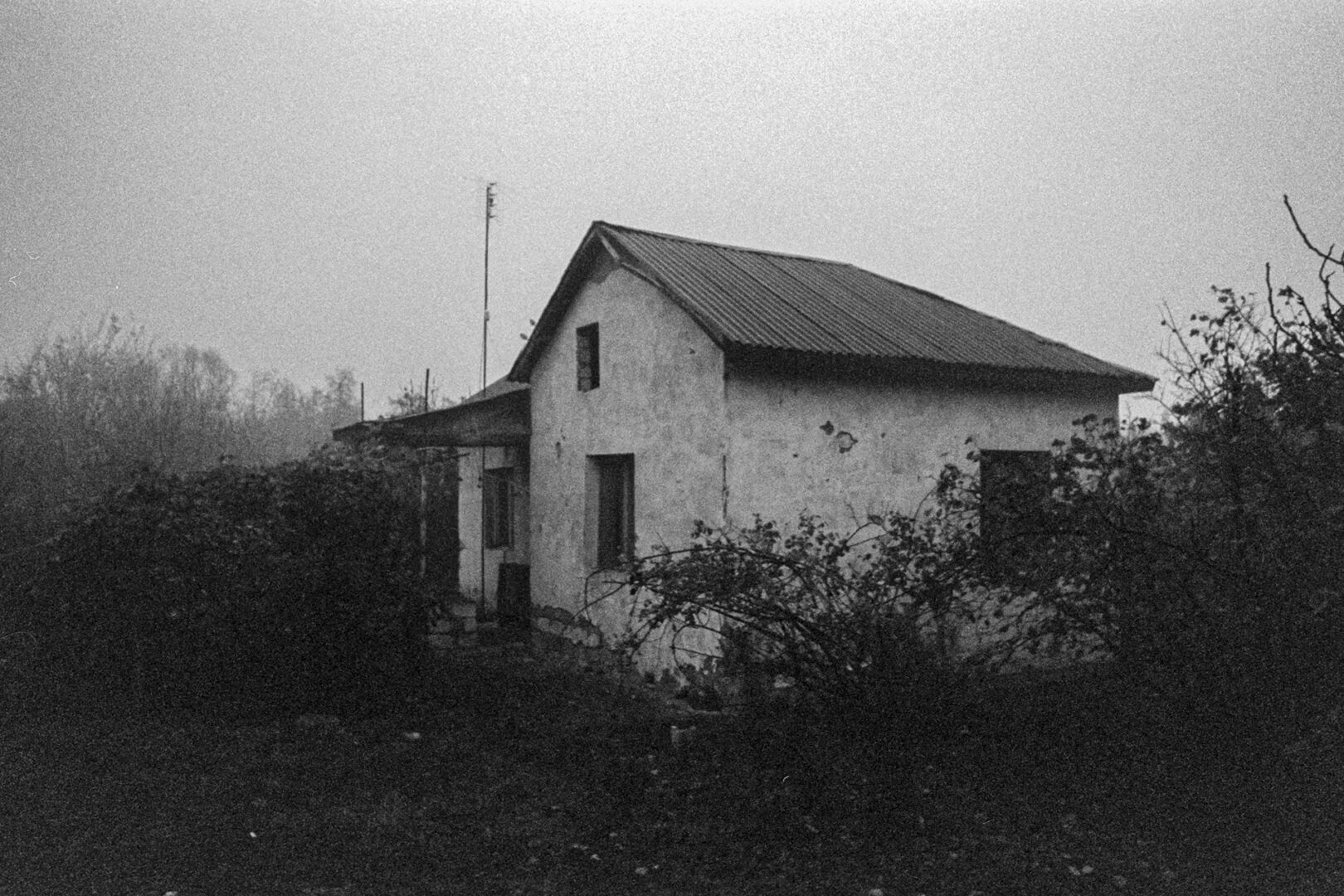
It was impossible to shoot the events of those days from a close distance. At least, I needed special distance, firstly because I needed the “permission” of the leaving person to get closer to what was his/her – life, house, and feelings.
In fact, I was photographing what that person possessed, but which would no longer be his/hers in a few hours.
When I was capturing the burning house from a distance, I realized that “losing a homeland” was losing that very piece of land and that very house… The man, who had lived through the first war, was burning the house he had built himself a second time.
The aftermath – the burning houses and abandoned objects were surrendered as bizarrely, as the people.
A day later, on November 14, I started to question the notion of the “special distance”. All of a sudden, I made a decision that, as a documentarian, I had to take objects and details from the border with me… When I took the plant, the house started to burn. I was close, very close. The flame devoured the door in no time. I was in Nor Getashen village, Shahumyan district.
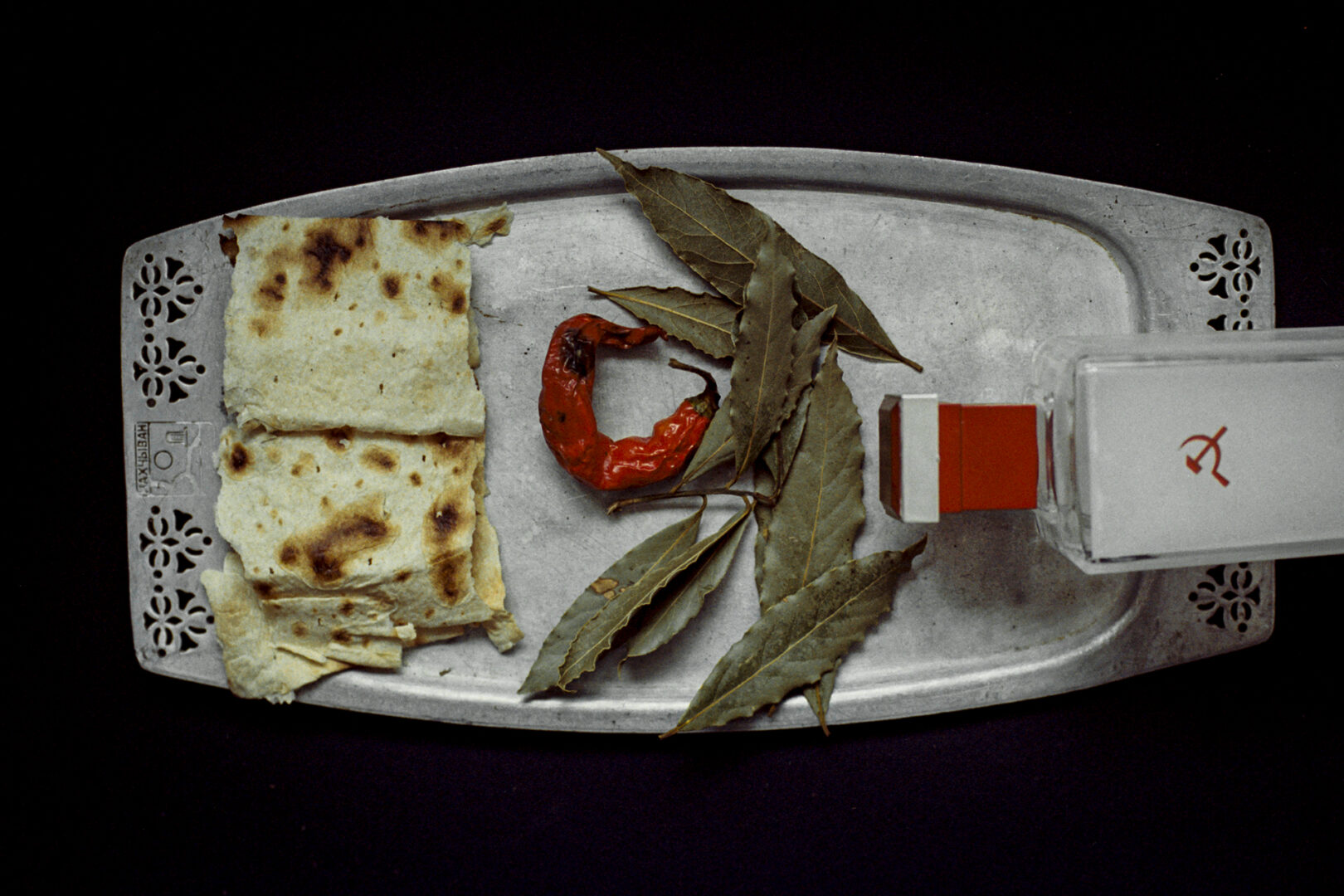
Several days later, things got more extreme; the time became compressed. The fragment became the only tangible allusion. On November 19, a knitted doll left in a combat helmet enclosed the whole village of Nor Haykajur, Martakert district; so did a sugar bowl from Maragha village of the same district… Feelings were suppressed too. Dialogues became more definite and unexpected. There were few people left. The departure was more acutely felt.
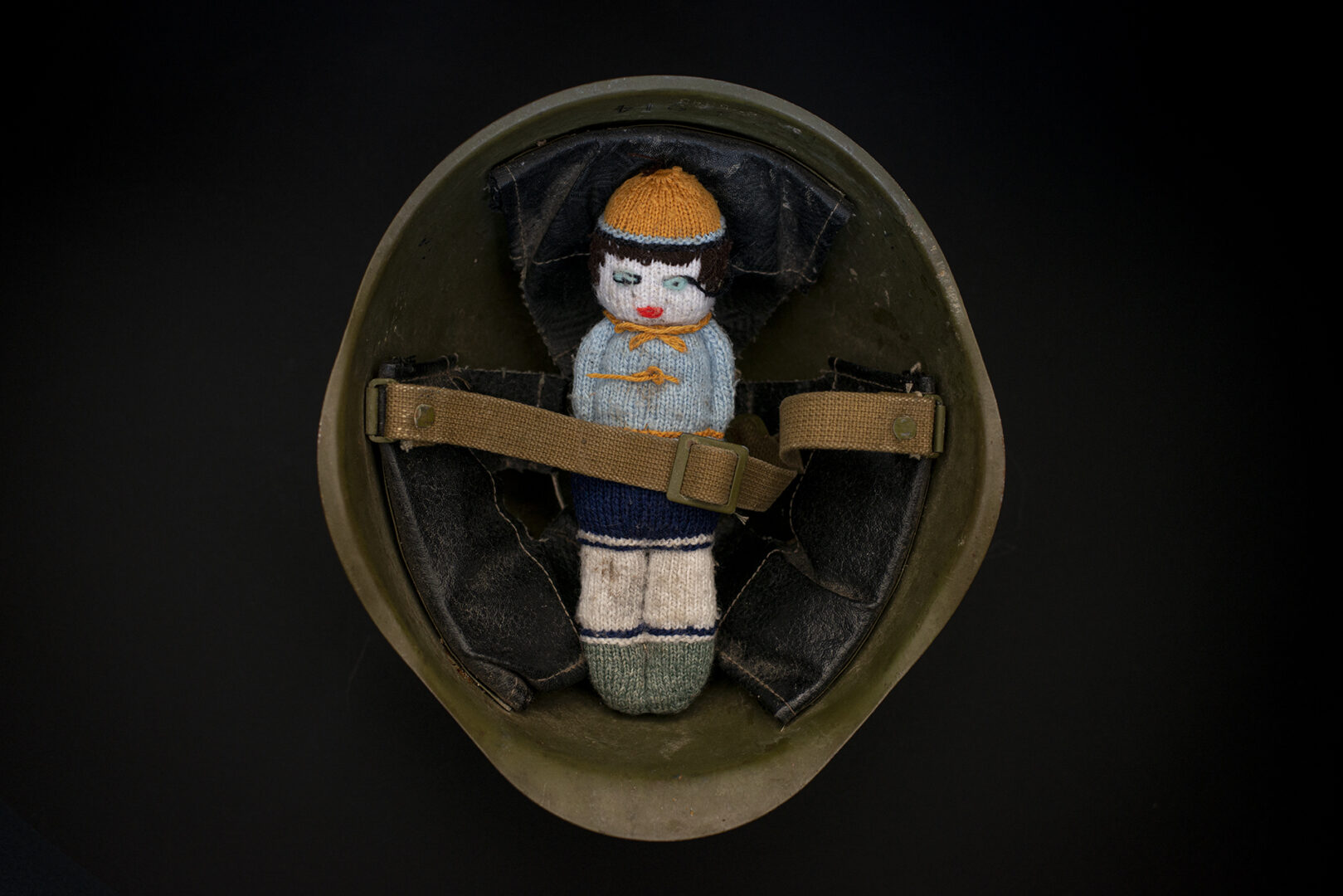
Young men in military uniforms were standing in front of a burning house in Nor Getashen village.
I approached them, “Excuse me, is it yours…?” “No, it’s my friend’s house. He is in hospital; his housemates are in Armenia. He asked me to set it on fire”, he answered without turning back to us and left.
Only divided and cut down trees, unable to abandon the place, were the witnesses of these events.
I brought a bullet from Artsakh… from the approaches of Shushi. Alongside many details symbolizing life, that bullet took me forcefully back to my childhood. I was little when my father went to war and returned with bullets as a “trophy” (I remember two transfixed bullets looked like a cross). Every day, I was sorting the bullets my father had brought – from large to small – unaware of what I was doing and what were they intended for?
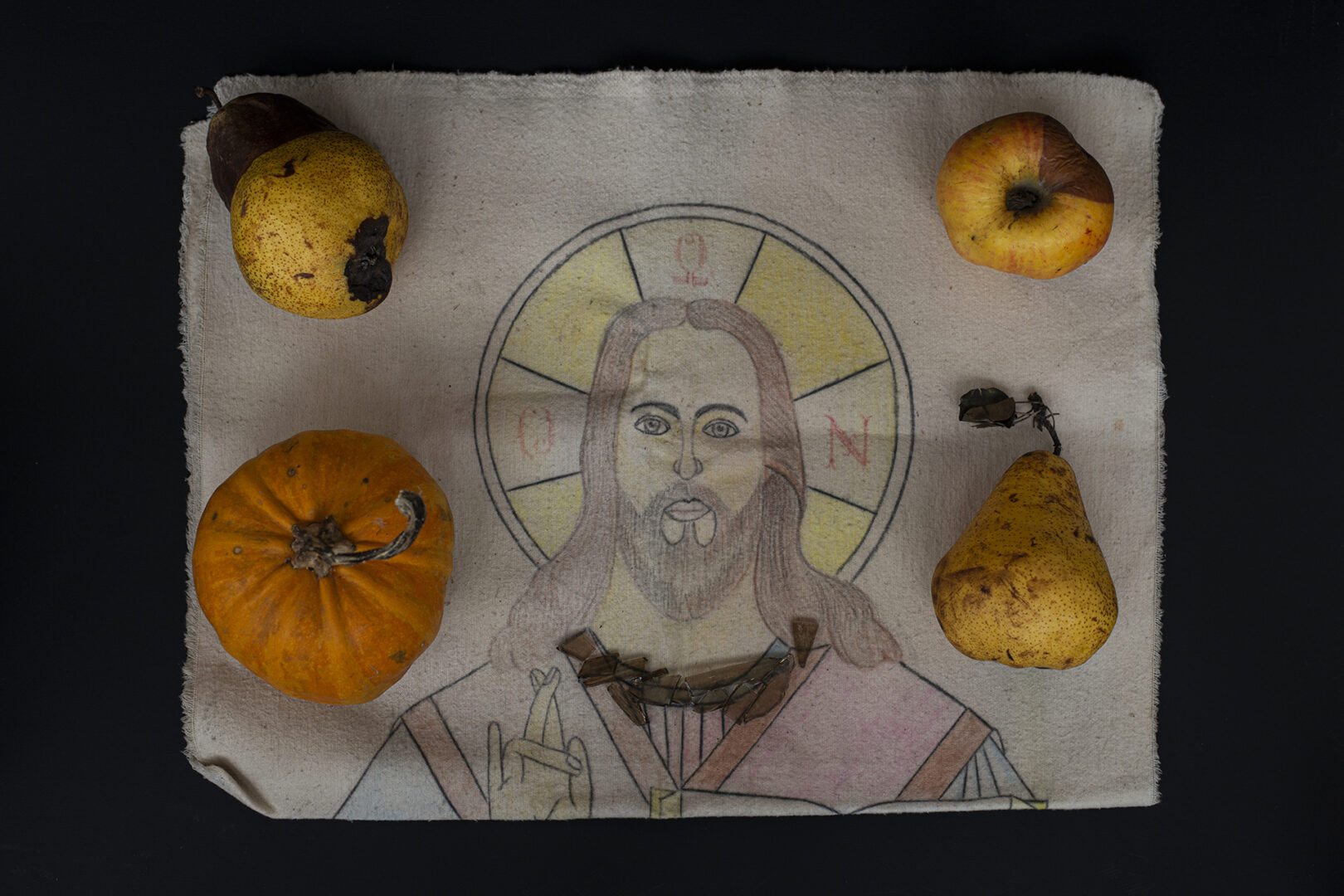
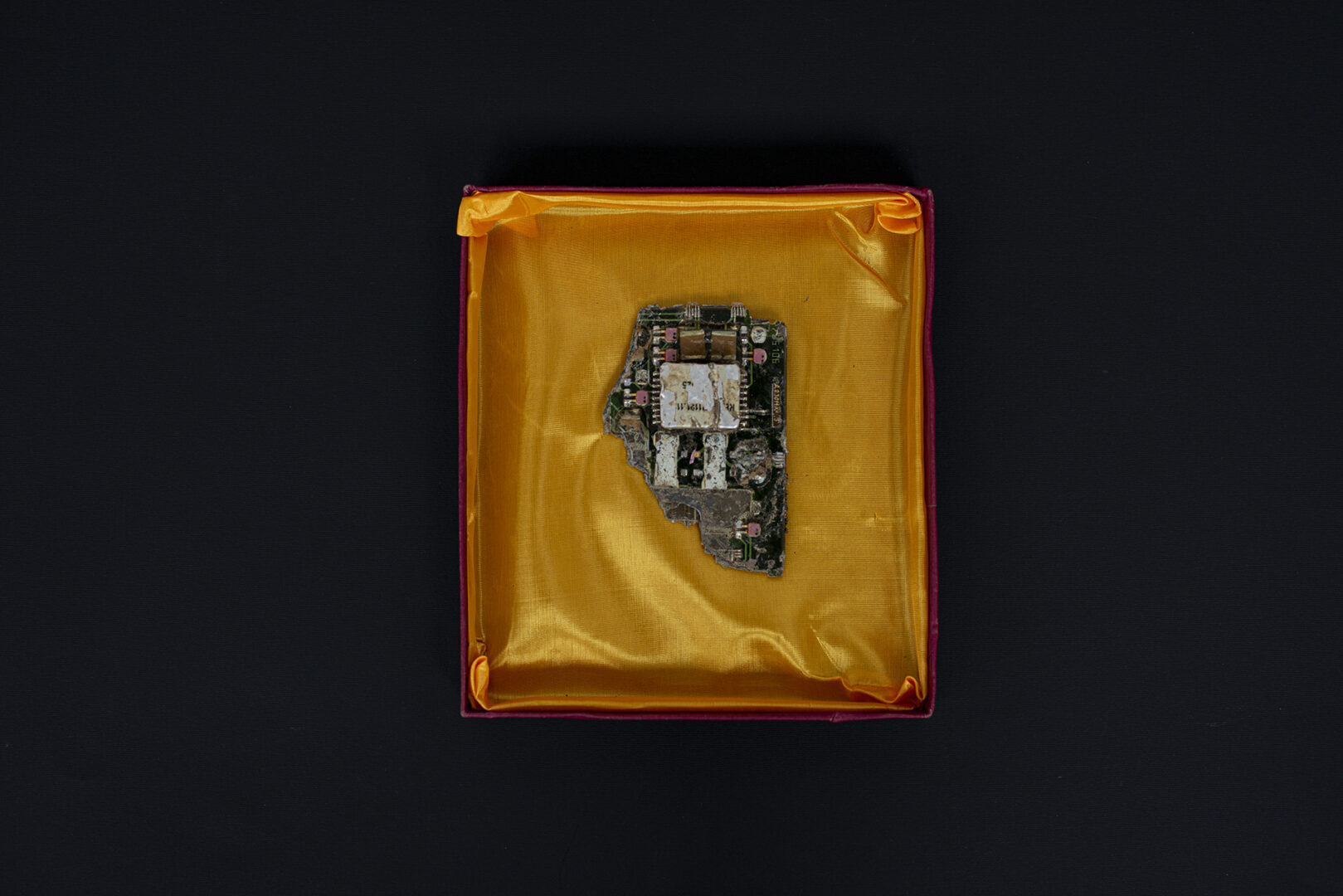
As a photographer, I had entered into the life of others, perceiving their feelings. By bringing with me a priest’s ceremonial dress, a handwritten letter by a student, candles, a tray and a small detail of a mechanism of the unmanned aerial vehicle, I somehow attempted to “categorize” the space, and to pass on the memory to others…
But it is impossible at all to “categorize” the immense squeezing pain in brief phrases, especially when a leaving person looks into your eyes and asks, “Shall I set my house on fire or not?”. Then responds to himself, “I still have time to decide” (8 hours).
I arrived in Yerevan at midnight of November 22, realizing for the first time that I came back from a place where there would be no return.
P. S. After the trilateral armistice agreement – ending the 44-day war – signed on November 10, 2020, we learnt about the list of Artsakh cities and communities that fell under Azerbaijani control. Therefore, the residents of Karvachar region were given only five days to vacate the area (later extended to ten days till November 25, 2020); the residents of Kashatagh were given twenty days. While the territory of Akna region should have been emptied within 10 days till November 20.
From November 13 to 15 and then from November 19 to 22, 2020, I traveled to Artsakh, visited several villages in regions of Karvachar, Kashatagh, and Martakert, as well as the approaches of Shushi to document the “forced” displacement, the effects of the war on the environment, the fragments that epitomized both simple life and its interruption. I have been to Nor Charektar, Nor Haykajur, Nor Maragha, Nor Getashen, Tandzut, Nor Brajur villages, Tsitsernavank and adjacent areas, Dadivank, Martakert and the approaches of Shushi. I have brought the fragments (household items, objects heralding the war, pieces of an ordinary life) with me from these areas. When juxtaposing the war with today’s experience, these objects – that no longer have a “place” and a “recipient” – have become part of a collage, disclosing the loss of their former significance and local connotation.


